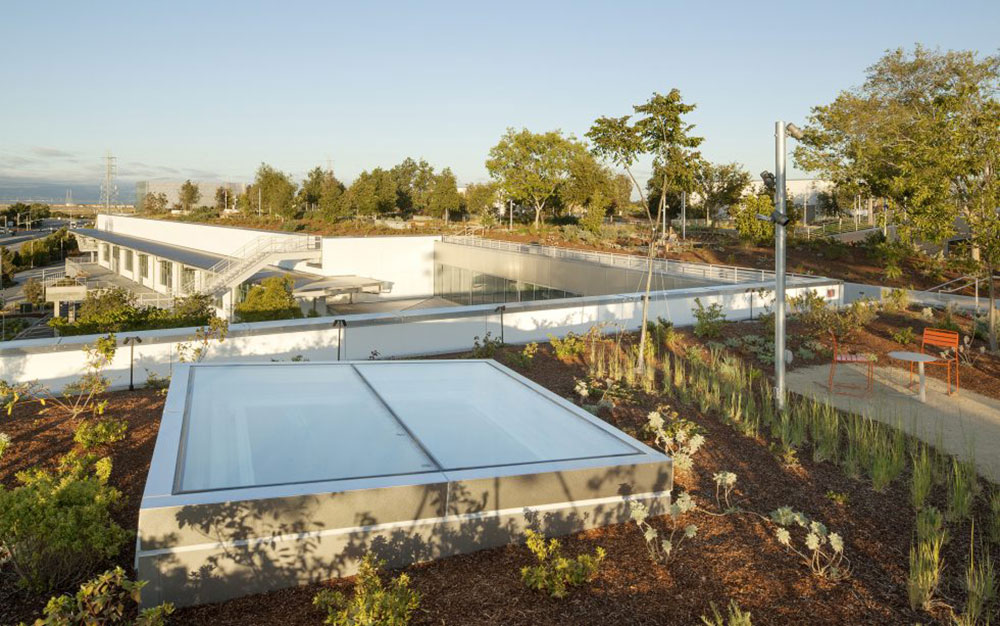The Bay Area is known for its environmentally conscious mindset – that of its citizens, environmental policies and the kind of development the region attracts. Initiatives have developed at municipal levels, such as San Francisco’sban on plastic checkout bags in 2013 and San Jose’s sustainable city plan. Private companies have also taken similar initiatives, think Facebook’s campus with its 9-acre green roof and Salesforce East’s Platinum LEED status remind us that sustainability is here to stay. Along with environmentally-intelligent development and the regulations that govern it, the need for equitable water management practices at both public and private levels is a growing issue. Currently, the Bay Area’s approach to water management is steadily improving with the help of the region’s development standards and the increase in our collective environmental awareness.
Although less intense than previous years, California’s drought conditions continue to affect most of the state. In response to the drought, California State Waterboards implemented emergency conservation measures. Less than a year ago, these emergency drought measures were lifted as the most extreme time of drought seemed to have passed. However, awareness of water resources is still holding strong. Taking advantage of the rain California does get serves as a promising way to offset the negatives of traditional stormwater management as well as promote more environmentally-conscious development that has less of an impact on the region’s water resources.
Traditional stormwater management methods collect and move stormwater runoff through storm drains and into nearby natural bodies of water. In areas with large amounts of impervious surfaces like parking lots, roads, sidewalk, rooftops, etc., rainwater can no longer soak into the ground like it would on undeveloped land. Stormwater in cities can cause flooding, erosion and infrastructure damage and picks up pollutants that damage the balance of waterbodies. The Bay Area has taken steps toward addressing some of the issues of increased urbanization by adopting methods and practices that lessen our impact on the environment.

As recently as 2005, the State Water Resources Control Board adopted, “sustainability as a core value for all California Water Board’s activities and program,” and began to require new development to adhere to Green Infrastructure (GI) and Low Impact Development (LID) standards. These initiatives promote sustainable development practices that aim to mimic a site’s pre-development hydrology through the implementation of measures and practices like bio-retention areas, permeable pavement, green roofs, bio-infiltration, etc. These practices allow stormwater to reabsorb into the ground while also improving water quality through natural filtration mediums like sand, gravel and soil. LID and GI methods may reduce construction costs and irrigation costs for commercial developments, but developers can take sustainability measures a step further by using some of the more in-depth LID measures such as rainwater harvesting.
Rainwater harvesting, like all LID practices, is malleable to the needs of a particular project. For some developments, harvested rainwater might best be put to use for landscaping needs. For other projects, like high-density residential or office spaces, rainwater harvesting can offset water usage from high toilet flushing demand. Industrial developments can use purified rainwater for industrial processing needs. Different uses for harvested stormwater require varying degrees of filtration and treatment.

Depending on the needs of a site, rainwater harvesting systems can be set up above or below ground, or even in storage ponds or reservoirs that add aesthetic appeal. Rainwater harvested from rooftops generally carries less pollutants, making it more ideal for indoor uses than rainwater collected from parking lots or landscaping features. Rainwater harvesting systems, although not inexpensive, can help obtain LEED credits for a green building as well as offset municipal water use.
LID practices and GI are becoming the norm in the Bay Area. Developments that choose not to simply meet the minimums for sustainability but go beyond them are leading the way in the region, creating a more desirable place to live and work. Furthermore, they are emulating the desires of the ever-growing population of conscious consumers who hold sustainable practices at both public and private levels, to the highest esteem.

